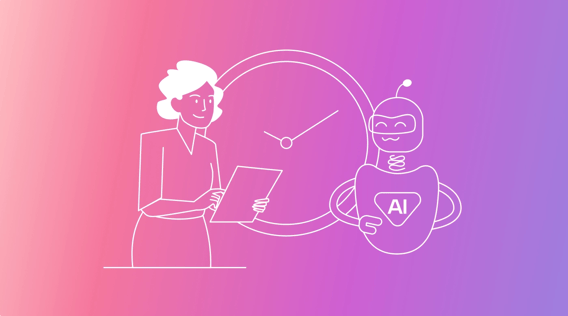Have you ever stopped to consider how much time it takes to sort emails or how much mental energy you need to compose the perfect report?
For most of us, these tasks suck up more time than we realize. Wouldn’t you like to have those precious hours back to devote to other areas of your business?
If so, then it’s time to take a good look at artificial intelligence and how it can help you work more efficiently.
In this article, we describe how AI increases productivity, including the benefits and challenges of using it for work tasks. We’ll then explore the ways AI can ramp up productivity so that you can focus your attention where it matters.
How does AI affect employee productivity?
AI boosts employee productivity for businesses in several ways:
- It helps employees streamline everyday processes through automation.
AI platforms take on tedious, time-consuming, and repetitive tasks, such as data entry or sorting through emails, and complete them in less time than they’d normally take.
- AI saves employees valuable time, energy, and cognitive demand.
Employees who aren’t spending time on tasks that could be automated are freed up to devote their energy to the creative or complex tasks and projects on their plates.
For example, AI can help researchers save time with their analyses by correctly grouping responses for later review.
For a lot of teams, AI can replace or support the low-skill tasks that demand much of their time.
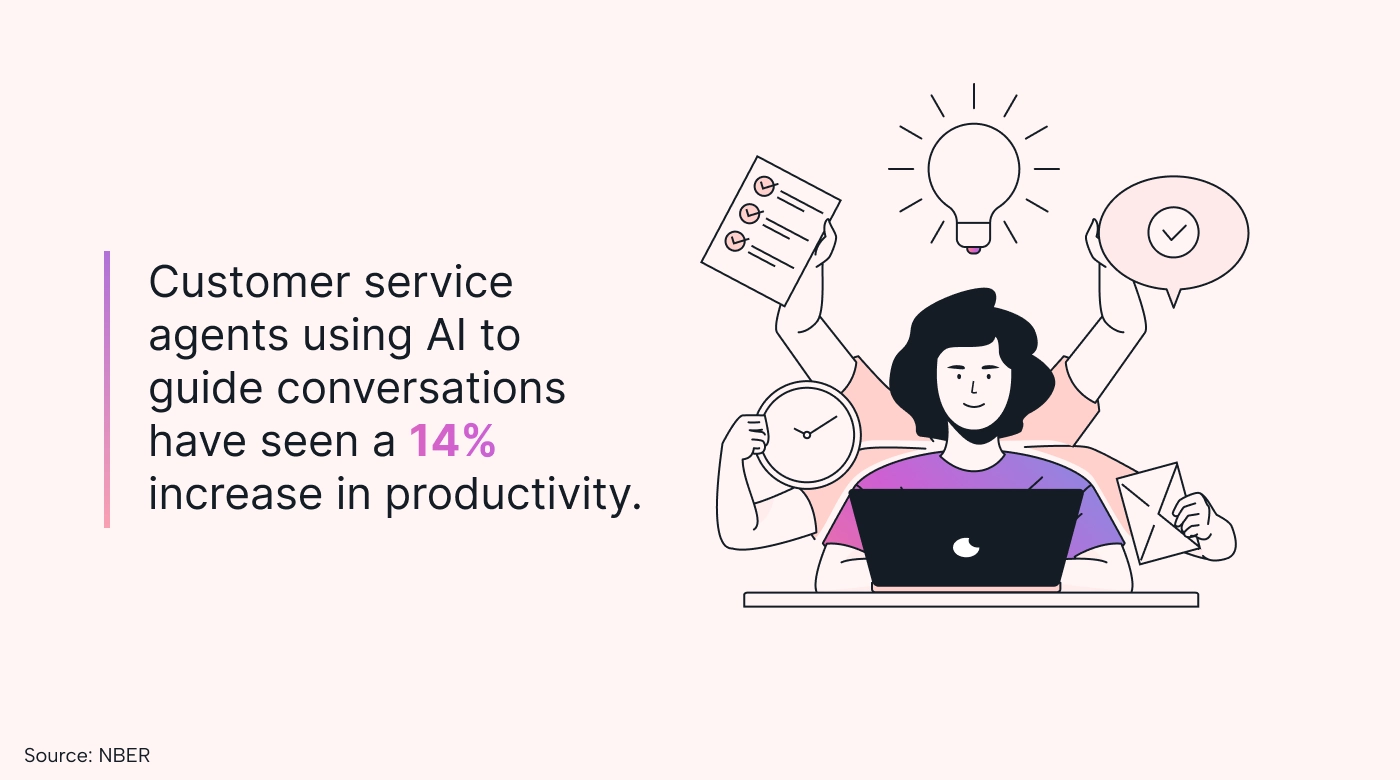
One company that provided customer service agents with AI to guide their customer conversations saw a 14% increase in productivity. The least experienced workers saw the most significant gains, including a 35% overall boost.
- Using AI to replace or support human efforts reduces the risks of error in tedious or repetitive tasks. Human beings get tired. AI doesn’t.
- AI has also been shown to improve employee satisfaction and retention. Employees with access to AI demonstrate 8.6% less attrition than those without.
- AI leads to improvements in the quality of work produced.
Consultants using AI average 40% higher-quality work than those who don’t. For other employees, the graded quality of their work product improves when they leverage generative AI.
Imagine the benefits AI can have on your business. Boosts in quality result in happier employees, more satisfied customers, and higher revenue.
And if you’re new to the world of AI? Take a look at this handy AI glossary to help you and your employees get up to speed.
Are there downsides to using AI in the workplace?
While AI offers users some tremendous benefits, there are a few drawbacks to keep in mind.
Depending on the scope of your product or service, your employees may require additional time and training to successfully understand and incorporate AI platforms into their everyday workflows.
Your business will need to research various products and compare costs. Some AI offerings may not be as budget-friendly for smaller businesses.
Depending on your business and the type of AI you’re considering, you must account for security and privacy risks. For example, any company that’s responsible for handling or maintaining confidential customer information should outline robust safeguarding policies and procedures when implementing AI.
While generative AI is a tremendous time-saver, it still requires a human reviewer to fact-check and maintain client privacy, accuracy, cohesiveness, and a correct tone before completion.
Now that you know the pros and cons, let’s turn to the actionable ways AI can increase employee productivity.
11 ways AI increases productivity
If you’re ready to ramp up your employee productivity, consider the various ways that AI can support your business:
1. Scheduling
Scheduling is one of the most critical (and time-consuming) work activities employees face.
While we all need time to plan and prioritize our weeks, it doesn’t stop there. Changing demands — not to mention last-minute emergencies — mean you’re constantly updating schedules.
Motion’s AI capabilities remove the need to plan, build, or adjust schedules from the equation. Motion creates the perfect schedule for you. You simply put in your meetings, events, and activities, and the AI does the rest.
Motion takes planning a step further by helping you tackle everyday tasks. The Task Manager slots every task into your calendar around your meetings, personal events, and deep work time. You prioritize the task, and Motion shows you when you have time to complete it. And if an emergency pops up, Motion automatically reprioritizes the task to keep your day on track.
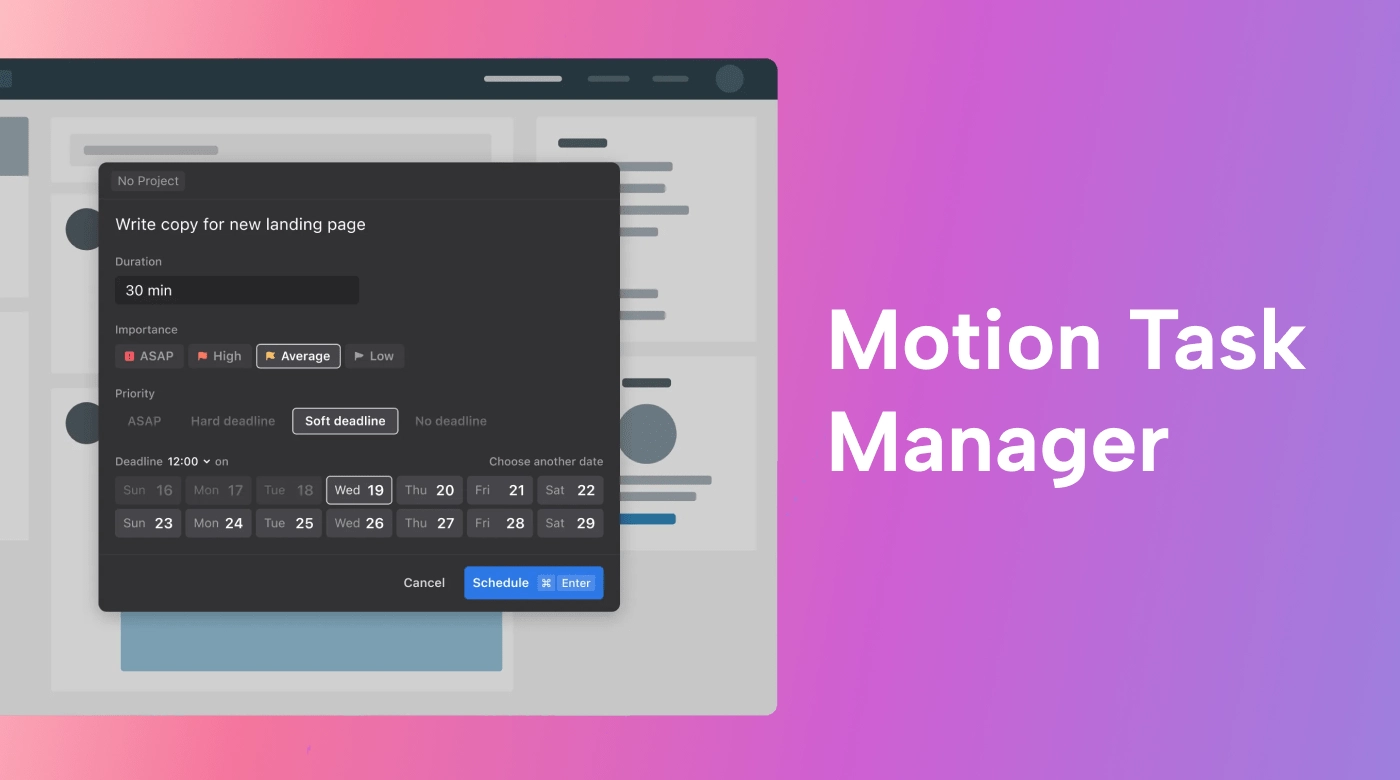
You can easily schedule daily or weekly recurring tasks through Motion. For example, assign tasks to get those 1:1 employee check-in meetings on the books or submit employee attendance sheets on time.
2. Virtual meetings
Employees average about 18 hours per week in meetings.
While you may not be able to reduce the number of necessary meetings, you can implement AI to make virtual meetings more successful.
Robust AI offers multi-language support for a global workforce. You can conduct meetings in different languages or switch between several languages during one meeting.
Some AI platforms can even attend meetings for you. Simply schedule the AI to attend, and it will report back with the information you need, including meeting notes and summaries. Meeting recordings and transcriptions are another nice bonus of virtual meeting AI, as you can quickly find key points or discussion items.
The Zoom AI Companion also offers smart recordings so you can find specific information easily, plus a chat feature that allows you to ask questions or catch up if you’re late to a meeting.
3. Email management
Employees spend about 15% of their workweek addressing emails. AI can help relieve that burden by sorting and prioritizing emails for you and your team.
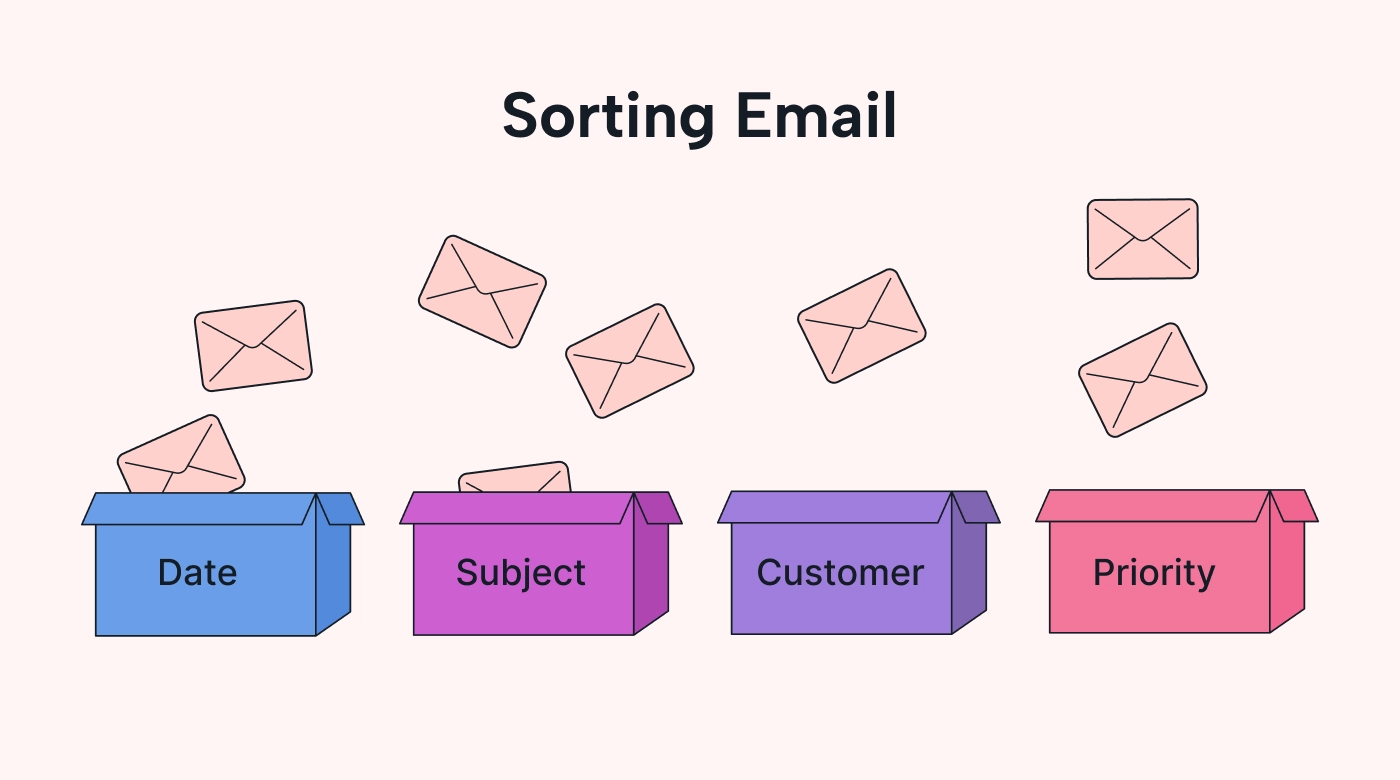
You determine the top priorities and categories needed to support your workflows. For example, identify which emails need your attention first so that you don’t have to sort through the hundreds you receive every day (and miss that critical message from management).
You can use AI to gain insights from customers, team members, and project managers to help drive actionable email responses. Generative AI tools draft emails for you, saving you valuable time and effort trying to create the perfect version.
Hiver is an AI platform that manages emails through Google Workspaces. Its AI bot “Harvey” will analyze your emails and suggest one of its pre-made templates to help you craft the appropriate response.
4. Attendance
Tracking and managing employee attendance is another way AI can support your workplace productivity.
Employees use AI for automated, real-time check-ins and outs through GPS or location tracking. They can also manage their attendance, submit leave requests, or notify management when corrections are needed.
Attendance software powered by AI makes entering your employees’ hours in daily, weekly, or monthly schedules easy. Tools like Pocket HRMS also include biometrics for automatic tracking.
5. Data entry
The time-consuming, tedious nature of data entry makes it especially vulnerable to human error.
With AI, however, employees can easily import data through scanning, email, or direct links, saving valuable hours of manual entry. Businesses enjoy faster turnaround times with this type of automation, leading to quicker reviews and analyses.
Employees also appreciate these platforms since they free them up to focus on other creative or higher-skilled areas of work.
Rossum reports a 96% accuracy rate when it comes to data entry. Scanned documents take just minutes to review.
6. Data analysis
Level up your productivity and efficiency with AI analytics.
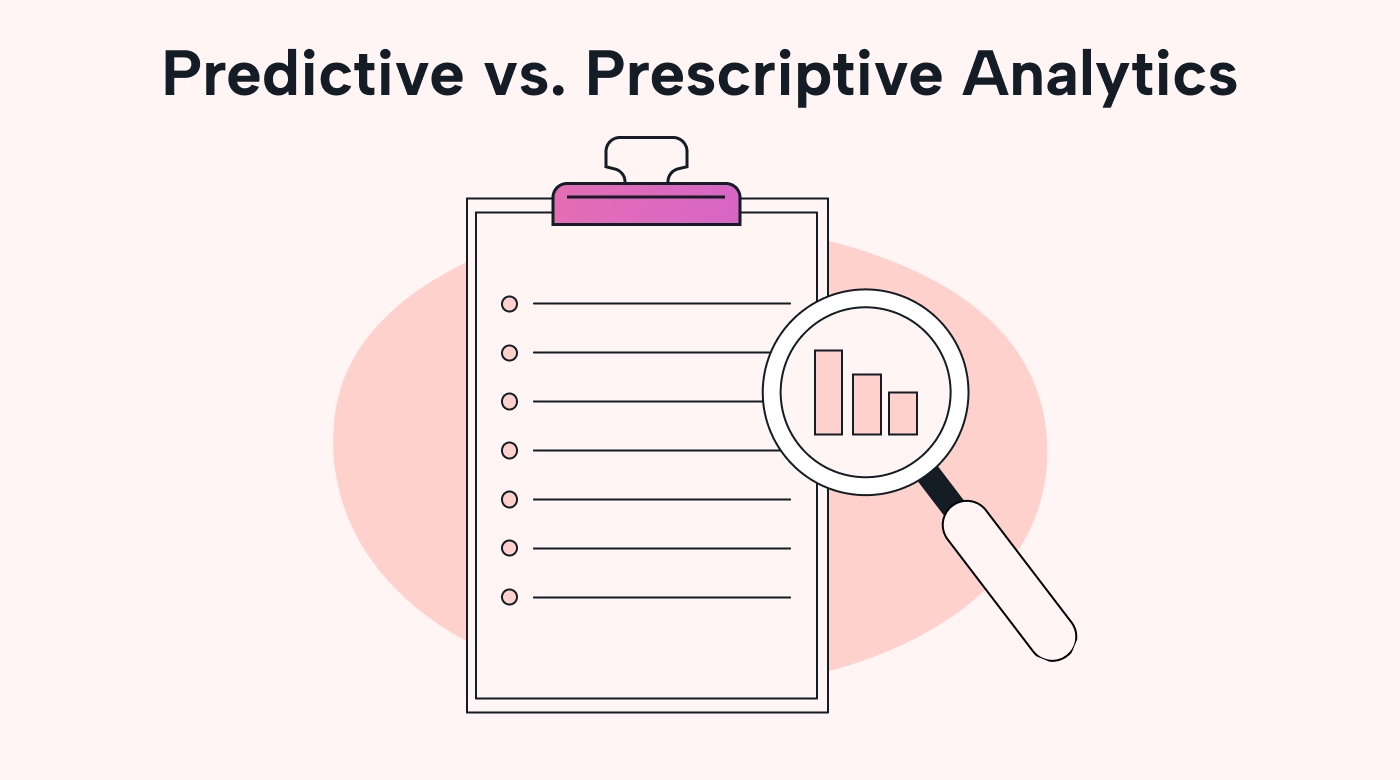
Consider whether predictive or prescriptive analytics would better serve your needs.
Predictive analytics allows companies to use AI to review large data sets and identify trends or patterns.
Prescriptive analytics takes this a step further by providing suggestions based on this data.
AI analytics processes large amounts of data at much higher speeds than the average human and substantially reduces the risk of error.
Take a peek at Google Analytics, which reviews information across the internet and different app platforms.
7. Project management
Whether you’re a project manager or a team member, you can expect some clear benefits from using a project management-based AI platform.
For example, AI initially detects which projects are more likely to succeed. Since human biases are removed, this ensures higher project success rates over time.
AI also provides better management of project scope. User stories are quickly identified and reviewed for potential issues so that you can take proactive steps to avoid or remove them. Plus, project steps and assignments are automated, reducing the amount of time needed for planning.
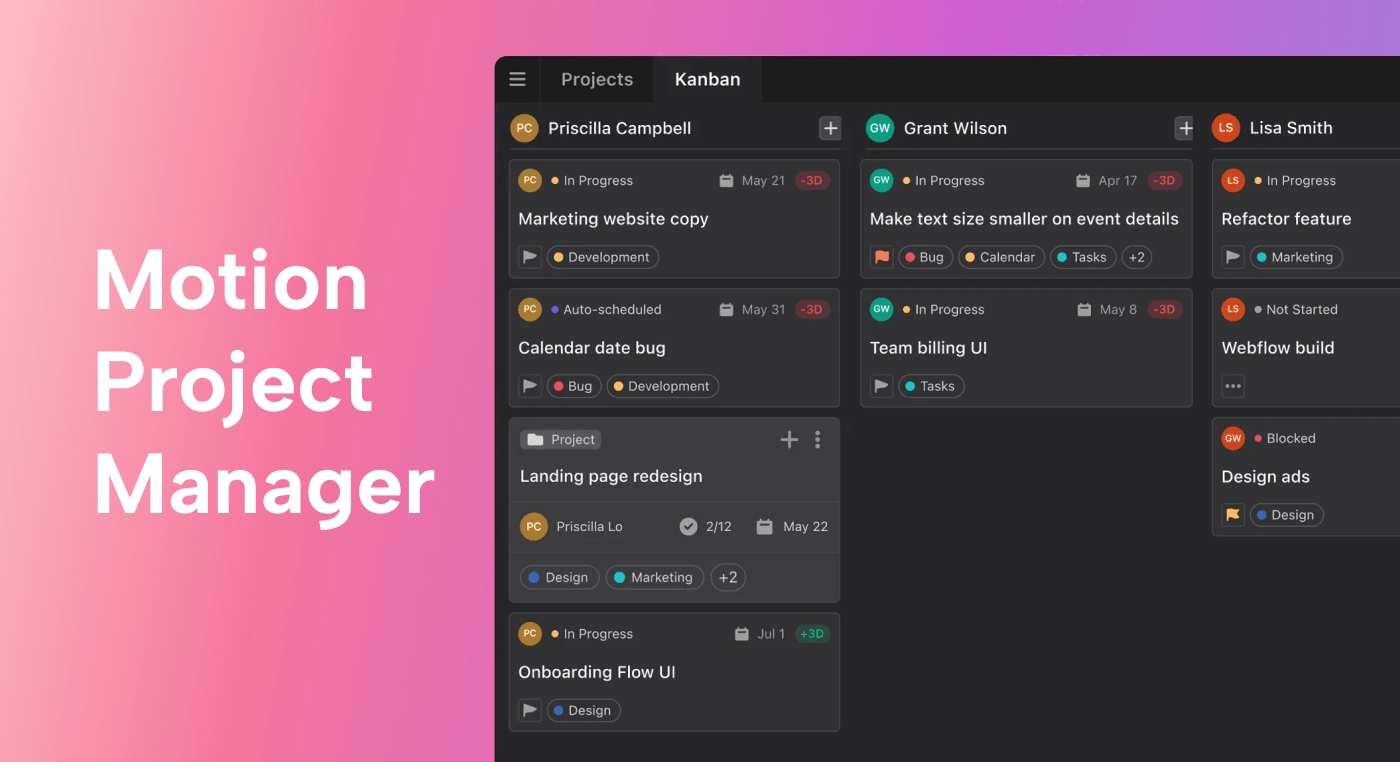
The Motion Project Manager automates 90% of project planning. It adds project work to each member’s calendar and measures how much your team can accomplish. It also ensures workloads are equitable by reviewing each team member’s calendar and assigning them their tasks accordingly.
With Motion, employees can store notes, attach documents, and ask questions in one easy place.
8. Customer service
If your business handles high call volumes, why not enlist a virtual receptionist to help out?
Calls are prioritized with AI, so your on-site employees only handle the ones that they need to. When questions are answered quickly and employee time is devoted to higher-skilled tasks, the customer experience improves.
Website chatbots provide extra online support, guiding customers to the right solutions.
Zendesk offers omnichannel support so that your customers can contact you through their preferred means. Its AI tools and workflow automation help with employee collaboration and quicker problem-solving for customers.
9. Writing
Generative AI has recently exploded in popularity, with 79% of employees reporting at least some exposure to it at work or home.
This type of AI supports a wide variety of content-driven writing, including reports, documents, proposals, and emails.
ChatGPT offers a free version where you simply type a prompt, and the AI delivers results within minutes.
Another way to support your writing through AI is with a platform like Grammarly. This software helps improve writing skills through basic grammar, tone, punctuation, and other editing features. You can even invest in the premium version to guard against plagiarism.
10. Research
Use AI research platforms to scan and locate related web-based text in minutes rather than hours.
These platforms are adaptable, making them a good fit for different industries. For example, you can fact-check for real estate listing comparisons or determine relevant case law or precedents for an upcoming deposition.
Scite.ai provides rapid, research-based responses to questions through Smart Citations.
11. Communication
Businesses use AI to improve communication in multiple ways.
Gain insights into employee satisfaction and engagement through quicker reviews of surveys, emails, and meeting transcriptions.
AI with collaborative features, like the Motion Project Manager, allows team members to engage in and comment on shared projects.
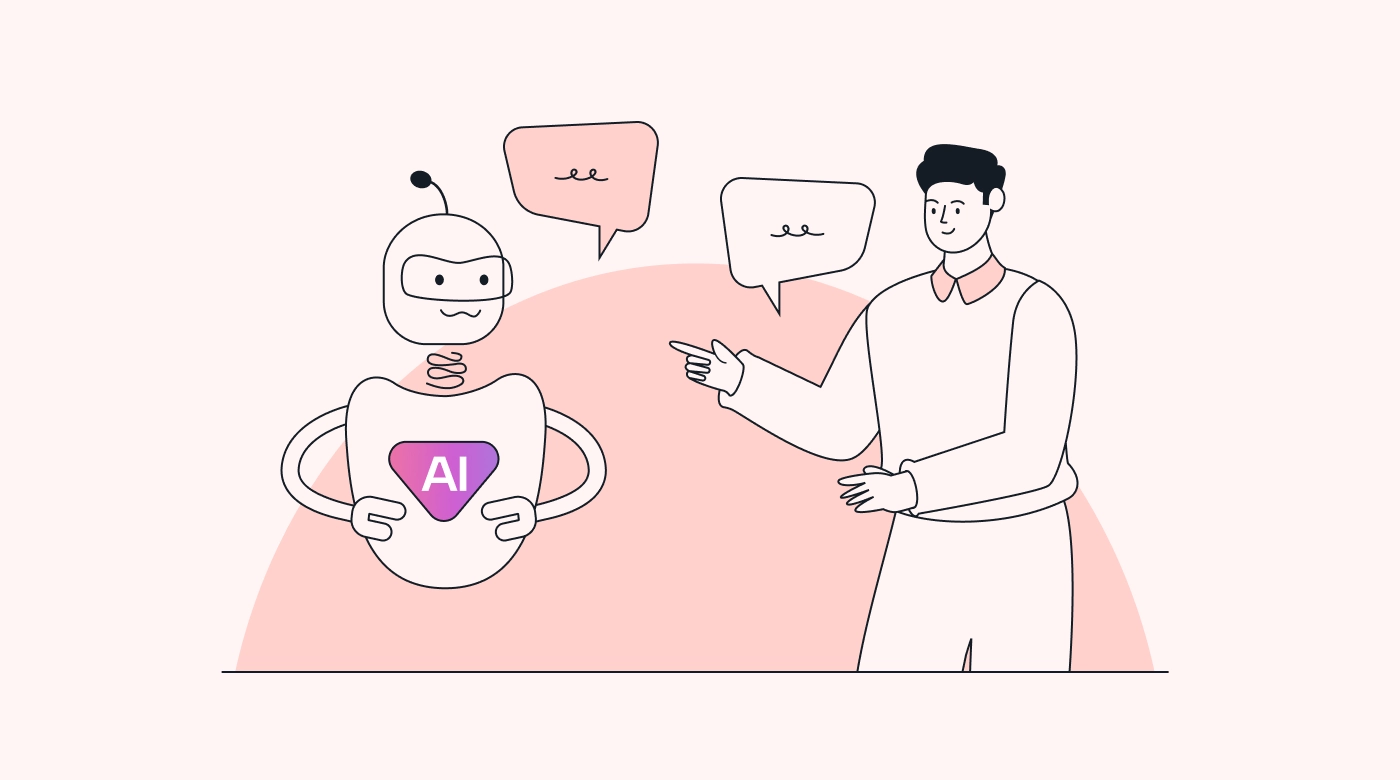
Generative AI can translate information into preferred languages, encouraging cross-cultural collaboration in global workforces.
Ready for a real-world example?
Sparkmate was founded in 2020 as the first venture studio to use climate technology and cutting-edge hardware to support start-ups.
Morgan Pelissier, Sparkmate Co-founder, turned to Motion to streamline task collaboration and management. As he explains, “You let yourself go. You put urgency, time, and task details into Motion, and then it shows you the tasks you need to do in the correct order. It helps me be on autopilot.”
Pelissier reports using Motion has resulted in higher team efficiency and focus. Who wouldn’t want that outcome for their bottom line?
Leverage the power of AI with Motion
AI offers businesses improved productivity, higher employee and customer satisfaction, and improved work quality, too. Are you ready to jump on board?
Turn to Motion to leverage the power of AI to better your business. Enter your events, meetings, focus time, personal events, and tasks, and Motion will build the perfect schedule for you. Motion’s automation helps ensure you get straight to work rather than worrying about what to do and when.
Don’t wait to boost your productivity and enjoy a more efficient workplace. Contact Motion for a risk-free trial today.

Jodi Monroe is a content writer and blogger in the SaaS space. When not at her laptop, she’s planning her next travel adventure.
